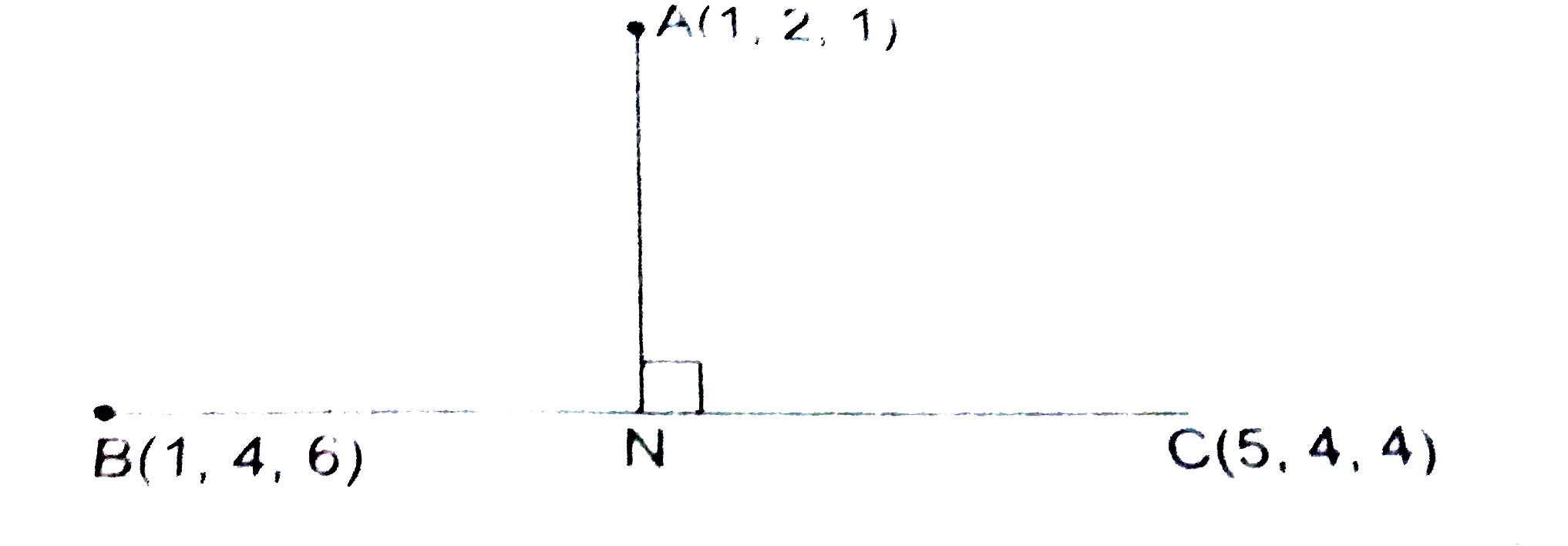Find the coordinates of the foot of the perpendicular drawn from the point A(1,2,1) to the line joining B(1,4,6)andC(5,4,4).
Draw AN⊥BC.
Let N divide BC in the ratio K:1.
Then, the coordinates of N are
(5k+1k+1,4k+1k+1,4k+6k+1).

∴ d.r.'s of AN are
(5k+1k+1−1,4k+1k+1−2,4k+6k+1−1),i.e.,(4kk+1,2k+2k+1,3k+5k+1)
And, the d.r.'s of BC are (5-1), (4-4), (4-6), i.e., 4, 0, -2.
Since AN⊥BC, we have
(4×4kk+1)+(0×2k+2k+1)−(2×3k+5k+1)=0
⇒16k+0−6k−10=0⇒10k=10⇒k=1.
Putting k =1, we get the coordinates of N as (3, 4, 5).
Topper's Solved these Questions
- BOOK - RS AGGARWALCHAPTER - FUNDAMENTAL CONCEPTS OF 3-DIMENSIONAL GEOMETRYEXERCISE - Exercise18videos
FUNDAMENTAL CONCEPTS OF 3-DIMENSIONAL GEOMETRY
- BOOK - RS AGGARWALCHAPTER - FUNCTIONSEXERCISE - Exercise 2D11videos
FUNCTIONS
- BOOK - RS AGGARWALCHAPTER - HOMOGENEOUS DIFFERENTIAL EQUATION EXERCISE - Exercise 2030videos
HOMOGENEOUS DIFFERENTIAL EQUATION
Similar Questions
Knowledge Check
- Question 1 - Select One
The coordinates of the foot of the perpendicular drawn from the point (3,4) on the line 2x+y−7=0 are
A(95,175)B(1,5)C(-5, 1)D(1, -5)
Find the coordinates of the foot of the perpendicular drawn from the point (2,3) to the line y=3x+4
View SolutionFind the co-ordinates of the foot of perpendicular drawn from the point (3,−3) to the line x−2y=4.
View SolutionFind the coordinates of the foot of the perpendicular from the point (−1,3) to the line 3x−4y−16=0.
View SolutionFind the coordinates of the foot of the perpendicular drawn from the point A(−1,8,4) to the line joining the points B(0,−1,3) and C(2,−3,−1).
View SolutionFind the coordinates of the foot o the perpendicular from the point (-1, 3) to the line 3x−4y−16=0
View SolutionFind the coordinates of the foot of the perpendicular drawn from the origin to the plane 2x−3y+4z−6=0.
View SolutionFind the coordinates of the foot of the perpendicular drawn from the origin to the plane 2x−3y+4z−6=0.
View Solution

